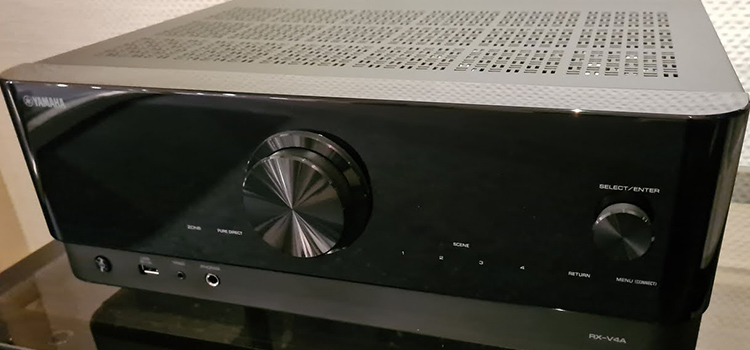What is Adaptive Resolution FPS Target?
Resolution and FPS (Frame per Second) are very important characteristics in any kind of graphical output. When you play games or make graphical models, you would want resolution and FPS as high as possible. Also, there is a need for balancing where the system runs at the right resolution and FPS for the best output. Adaptive resolution works as the balancer between the two so as to produce the best image that the system is capable of. In other words, adaptive resolution somewhat disperses the disability of the CPU and the GPU by changing the resolution to meet the FPS target. We will learn about it in detail in our following segments.

What is Adaptive Resolution?
Adaptive resolution is one kind of characteristic of the graphical work that deals with the changes of resolution in order to balance the other settings and ultimately, to provide the best possible experience to the users as the system is capable. The highest resolution of your monitor is fixed and you just cannot cross that limit. However, the applications you run on the system can be commanded to adjust the resolution from time to time to achieve the right balance between resolutions, refresh rate, FPS, etc. For example- you are playing a game by setting the resolution lower than the system is capable of and if you turn the adaptive resolution settings on, then your game will lower or even higher the resolution so that it can collaborate in the best possible way with the FPS, aspect ratio, and refresh rate.
What is Adaptive Resolution FPS Target?
When we talk about adaptive resolution, we generally associate it with the FPS. Adaptive resolution FPS target is a feature or settings of applications to set a particular FPS limit around which the resolution hovers around. So to speak, setting an FPS target of 60 or 100 in a game means the resolution of the game will adjust (high or low) so that it always runs at that FPS limit. As a result, you may view blurry images and the overall gaming experience is hampered.
In most cases, our system has limitations. We may not have a powerful CPU (Central Processing Unit) or the GPU (Graphical Processing Unit) is old and does not have enough resources to run a particular application. Also, the monitor may not be capable to produce good resolution and run at higher FPS. To combat these limitations, we need some features within the hardware and inside the application to adjust one or two settings. Adaptive resolution FPS target is a good feature in this aspect.
What does happens when you set an FPS target? Let us say, you are playing a game called ‘Apex Legends’ and you have set 100 FPS targets from the in-game settings which are in fact, the highest that you can set in this particular game. And your monitor is capable of running at 144 FPS. So, you have lowered the limit much less than the highest point. Here the game will always run at least 100 FPS no matter what. It will not hesitate to lower the resolution to achieve the target. If the target is over-achieved and the game is running at 120 FPS or more, then your resolution will get increased.
For low FPS monitors, it is not ideal to turn on the adaptive resolution FPS target feature. Why is that? It is because to achieve a relatively higher FPS than the system is capable of, the resolution is decreased to such a point that the image quality gets really bad. You would see blurry pictures, scaling issues, and distorted images. That’s why many gamers do not like to turn the adaptive resolution FPS target on. In the following picture, the FPS limit is set to ‘100’ inside the in-game settings of the Apex Legends.

Frequently Asked Questions (FAQs)
There are some common questions asked by many users regarding adaptive resolution and we will try to answer those queries in this segment.
Is Adaptive Resolution Good?
It is not a straightforward answer. The adaptive resolution can be good or bad depending on the system one possesses. If you have a 4K monitor with high FPS like 144 Hz or more, then I will suggest you set the limit of FPS. Plus, the adaptive resolution is good for competitive gamers who prefer higher FPS and refresh rates to resolution. However, you do not want to see blurry pictures no matter what type of gamer you are.
How to Turn on Adaptive Resolution?
You have to turn on the adaptive resolution from the in-game or inside application settings. It may be found under the advanced settings menu in some of the games. You can also change the FPS limit by navigating to the game folder and editing settings using the notepad.
How to Remove Blurry Images?
You may experience blurry images when the resolution is dipped down to a significant level. In this case, you should lower every graphical setting inside the game. So, run the game at a much lower FPS than the monitor is capable of. If the blurry images persist, then I would recommend you turn off the adaptive resolution FPS target.
Can You Get Higher Resolution by Turning On the Adaptive Resolution?
Yes, you can get higher resolution from some of the games sometimes but your hardware specifications must be much better than that game’s highest point. Otherwise, the resolution is compromised to meet the FPS target.
Conclusion
Adaptive resolution can help you in compelling the application to run at a certain FPS that you want. However, to do this, most often the resolution is sacrificed and you start to see a blurry image which is even more disappointing to many than micro stuttering with lower FPS. So, it differs from person to person which one is more important- resolution or FPS. Above all, there is no substitute for getting good hardware; a good processor, monitor with higher resolution, refresh rate, and FPS.
Subscribe to our newsletter
& plug into
the world of technology





